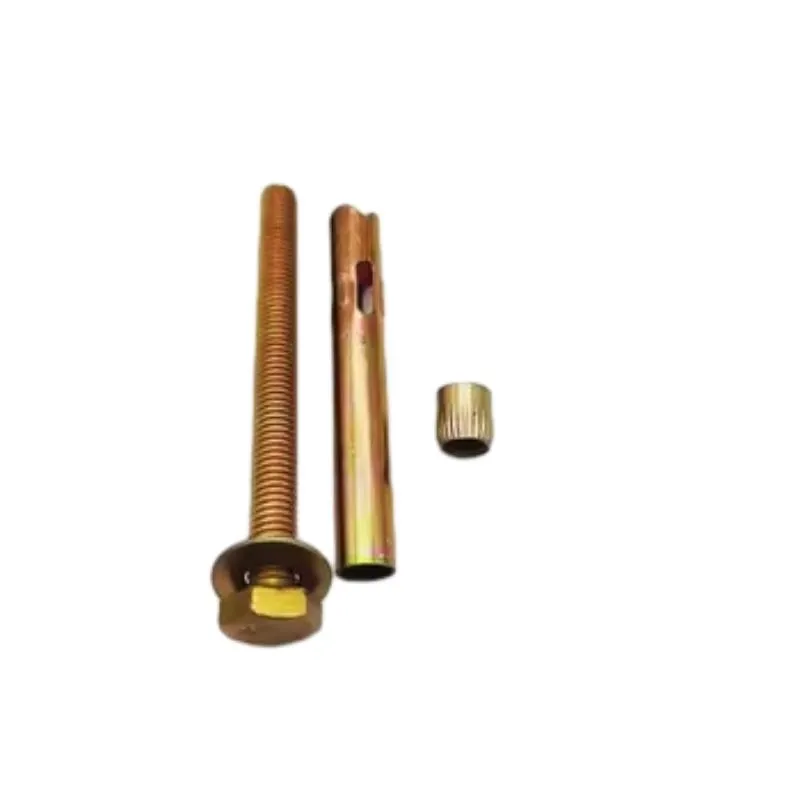Қаз . 10, 2024 17:44 Back to list
Concrete Ceiling Anchors for Securing Threaded Rods in Construction Projects
Concrete Ceiling Anchors for Threaded Rod A Comprehensive Guide
When it comes to securing threaded rods in concrete ceilings, the choice of anchor is crucial for ensuring stability and safety. Concrete ceiling anchors are specialized fasteners designed to provide a strong hold in concrete, making them ideal for various applications, from hanging heavy fixtures to supporting structural components. In this article, we will explore the various types of concrete ceiling anchors suitable for threaded rods, their installation processes, and key considerations to ensure you choose the right one for your project.
Types of Concrete Ceiling Anchors
1. Expansion Anchors These are among the most common types of anchors used in concrete. Expansion anchors work by expanding against the sides of the drilled hole in the concrete, providing a tight grip. They typically come in steel or zinc-plated finishes and can handle substantial loads. For threaded rods, expansion anchors often feature a pre-drilled hole for easy installation.
2. Sleeve Anchors Sleeve anchors consist of a metal sleeve and a nut-and-bolt assembly. When the bolt is tightened, the sleeve expands, gripping the concrete securely. They are highly versatile and are ideal for medium to heavy loads. Sleeve anchors are commonly used when the rod needs to be adjusted or removed frequently.
3. Wedge Anchors Wedge anchors are similar to expansion anchors but are designed to provide superior holding power. They consist of a threaded rod with a wedge-shaped end. Upon tightening, the wedge pulls the anchor into the concrete, creating a secure hold. They are perfect for heavy-duty applications, such as supporting industrial equipment.
4. Drop-In Anchors These anchors are used for applications where the anchor will not be removed frequently. They are inserted into a pre-drilled hole and expand within the concrete upon installation. Drop-in anchors are ideal for overhead applications and are commonly used in conjunction with threaded rods to suspend various structures.
5. Chemical Anchors A more advanced option, chemical anchors use resin-based adhesives to bond threaded rods to concrete. This method provides exceptional strength and is particularly effective in situations with varying loads or environmental conditions. They are ideal for high-performance applications where traditional anchors may fall short.
Installation Process
The installation of concrete ceiling anchors for threaded rods involves several key steps
concrete ceiling anchors for threaded rod

1. Select the Right Anchor Based on your application, load requirements, and environmental considerations, choose the appropriate anchor type.
2. Drill the Hole Use a hammer drill with a concrete bit to create a hole in the ceiling. The diameter and depth of the hole should match the specifications of the anchor being used.
3. Insert the Anchor Depending on the anchor type, this could involve simply inserting it into the hole or applying adhesive (for chemical anchors).
4. Install the Threaded Rod Once the anchor is properly in place, thread the rod into the anchor. Make sure it is securely tightened to ensure a solid hold.
5. Test the Installation After installation, it’s advisable to test the anchor's strength by applying a load gradually, ensuring that it can handle the intended weight.
Key Considerations
When selecting concrete ceiling anchors for threaded rods, consider the following
- Load Capacity Assess the weight that the threaded rod will need to support and select an anchor with a sufficient load rating. - Environmental Conditions If the installation is in a moist or corrosive environment, choose anchors that are resistant to rust and corrosion. - Ceiling Thickness Ensure that the anchor selected is appropriate for the thickness of the concrete ceiling to prevent failure.
Conclusion
Concrete ceiling anchors for threaded rods play a vital role in ensuring the stability and safety of various installations. By understanding the types of concrete anchors available, their installation processes, and key considerations, you can make informed decisions that will lead to successful and secure applications in your projects. Whether you're an experienced contractor or a DIY enthusiast, selecting the proper anchor is essential for achieving lasting results.
-
The Ubiquitous Reach of DIN934 in Application Realms
NewsMay.16,2025
-
Exploring Different Bolt Types
NewsMay.16,2025
-
Cracking the Code of Sleeve Anchor Mastery
NewsMay.16,2025
-
Clamp Design Principles,Types and Innovations
NewsMay.16,2025
-
Artistry Inspired by the Humble Anchor Bolt
NewsMay.16,2025
-
A Deep Dive into Screw Types
NewsMay.16,2025


